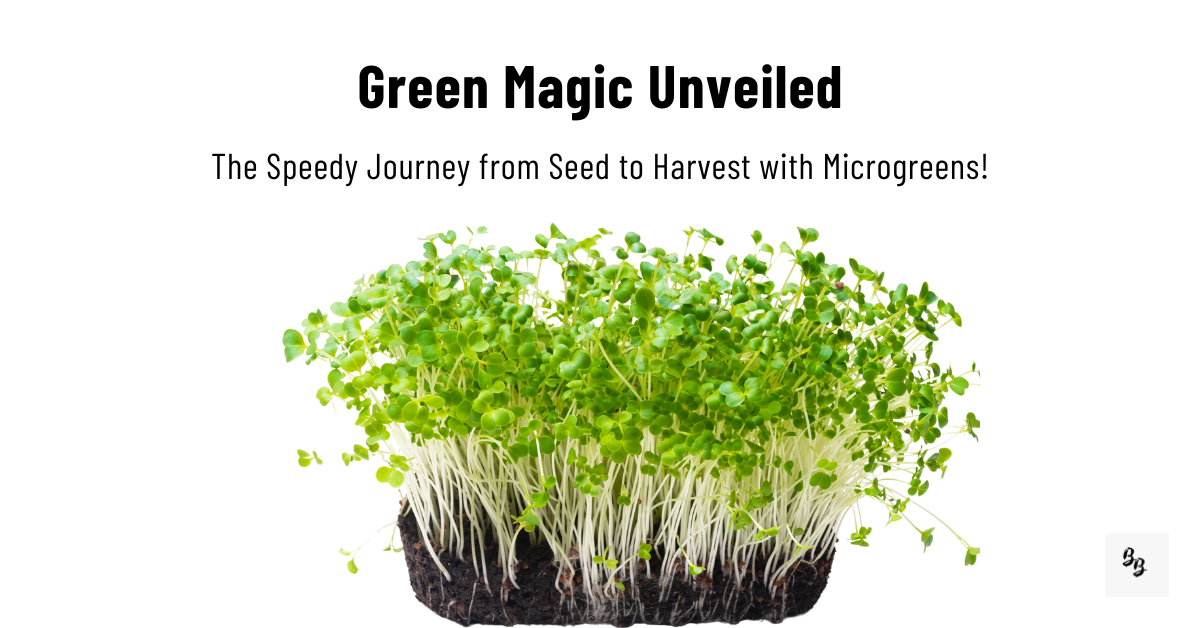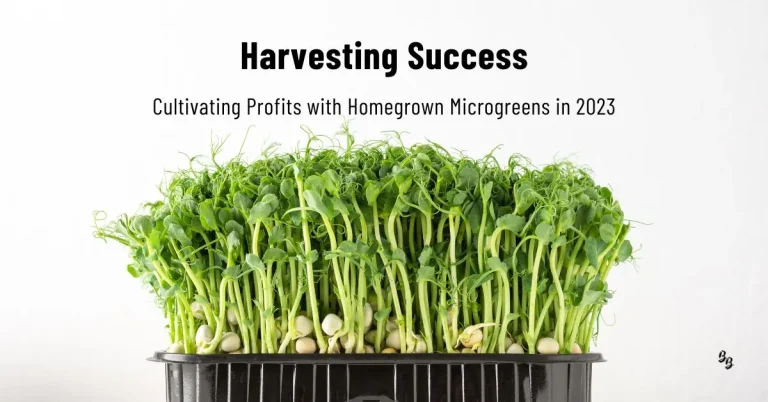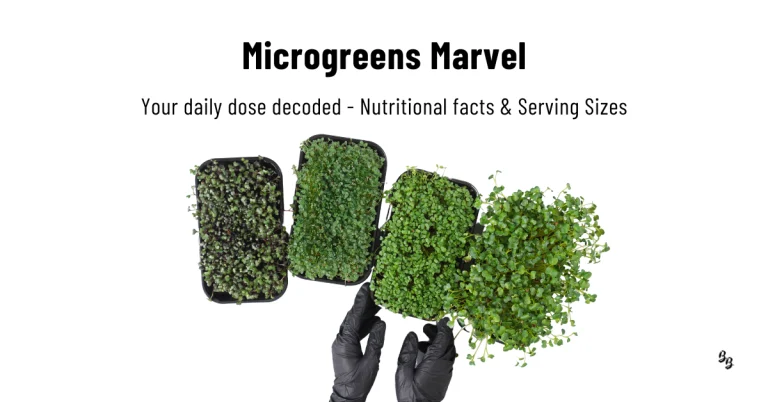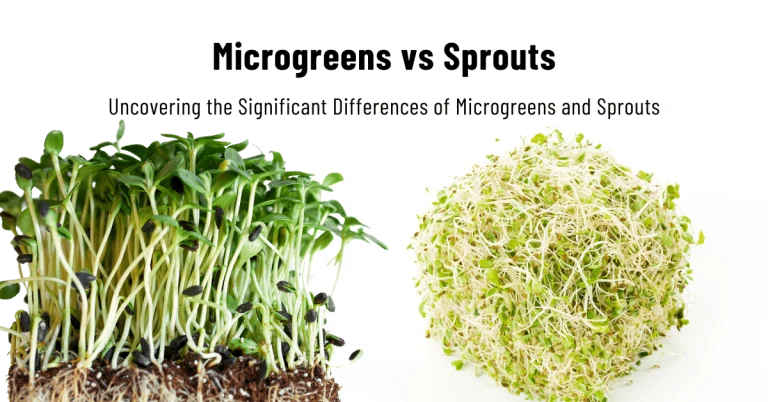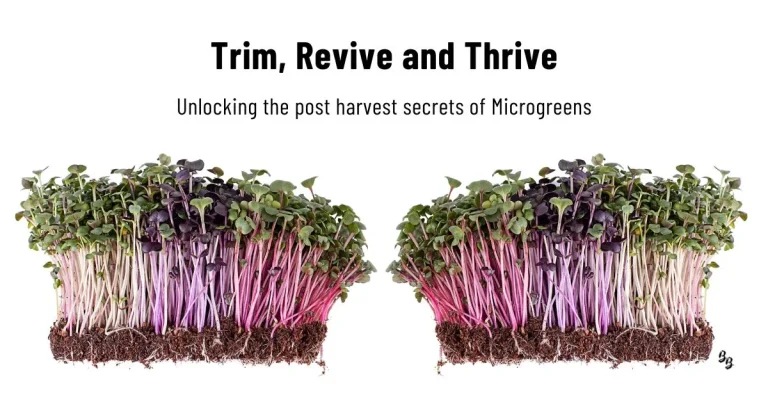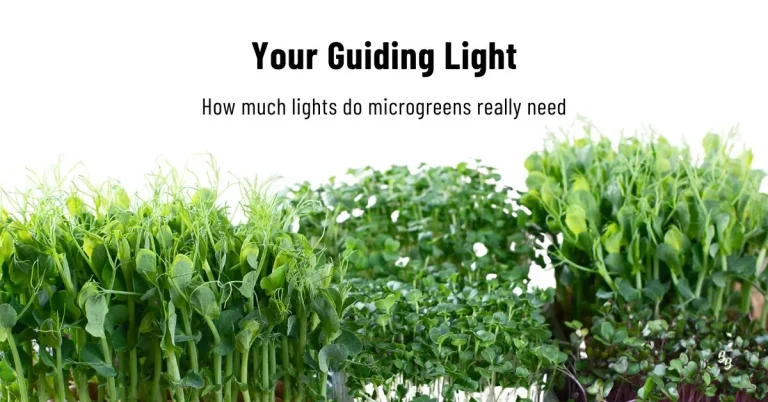How Fast Microgreens Grow: From Seed to Harvest
Let’s delve into the fascinating world of these tiny nutritional powerhouses and exactly how fast microgreens grow. These young and tender edible seedlings of various vegetables and herbs, have gained immense popularity in the culinary world for their intense flavors, vibrant colors, and impressive nutritional content.
Growing microgreens from seeds requires minimal effort, and with the right growing medium and room temperature, you can enjoy a continuous supply of fresh microgreens in just a little bit of time.
In this article, we’ll explore some of the easiest microgreens to grow, their exceptional germination rates, the transition from cotyledon stage to the first set of true leaves, and the best practices to ensure a bountiful harvest of these delightful greens.
Let’s embark on this green journey together and uncover the joy of cultivating your own microgreens!
Microgreens Grow Fast: The Growth timeline
The growth timeline of microgreens showcases the various stages of development, from sowing the seeds to harvesting the tender greens. Understanding the growth phases can help you plan and monitor the progress of your microgreens.
The typical growth timeline, how fast microgreens actually grow.
Day 1 – Sowing Seeds
On the first day, sow the microgreen seeds evenly on the prepared growing medium. Gently press the seeds into the soil for good seed-to-soil contact.
Day 2-3 – Germination
Within the next couple of days, the seeds will begin to germinate. Tiny sprouts will emerge as the seeds break through the soil surface.
Day 4-7 – Cotyledon Stage
Around day 4 to 7, you’ll notice the appearance of the cotyledon leaves, which are the first two seed leaves. These initial leaves are different from the true leaves and are essential for early growth.
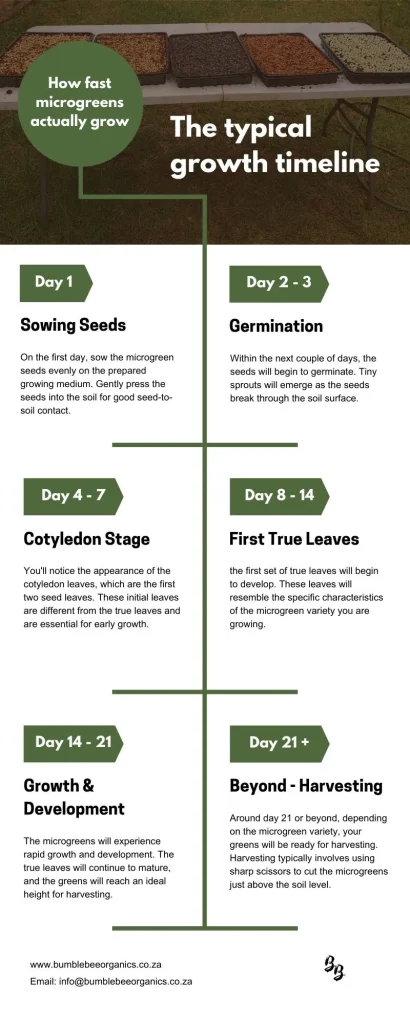
Day 8-14 – First Set of True Leaves
Between day 8 to 14, the first set of true leaves will begin to develop. These leaves will resemble the specific characteristics of the microgreen variety you are growing.
Day 14-21 – Growth and Development
In the next phase, the microgreens will experience rapid growth and development. The true leaves will continue to mature, and the greens will reach an ideal height for harvesting.
Day 21 and Beyond – Harvesting
Around day 21 or beyond, depending on the microgreen variety, your greens will be ready for harvesting. Harvesting typically involves using sharp scissors to cut the microgreens just above the soil level.
After understanding the growth timeline of microgreens, let’s now explore the critical factors that influence their growth speed and overall development.
Factors affecting the growth speed of microgreens
The growth speed of microgreens can be influenced by various environmental factors that impact their development. Understanding and optimizing these factors can significantly enhance the growth rates of your microgreens.
Let’s delve into the key factors affecting the growth of microgreens and explore some tips and tricks to promote their optimal development.
Light
Light plays a crucial role in the growth of microgreens. Providing adequate light is essential for photosynthesis, which is responsible for converting light into energy. Place your microgreens in a well-lit area, preferably near a south-facing window or under grow lights if natural light is insufficient. However, avoid exposing them to direct sunlight, as it can cause stress and hinder growth.
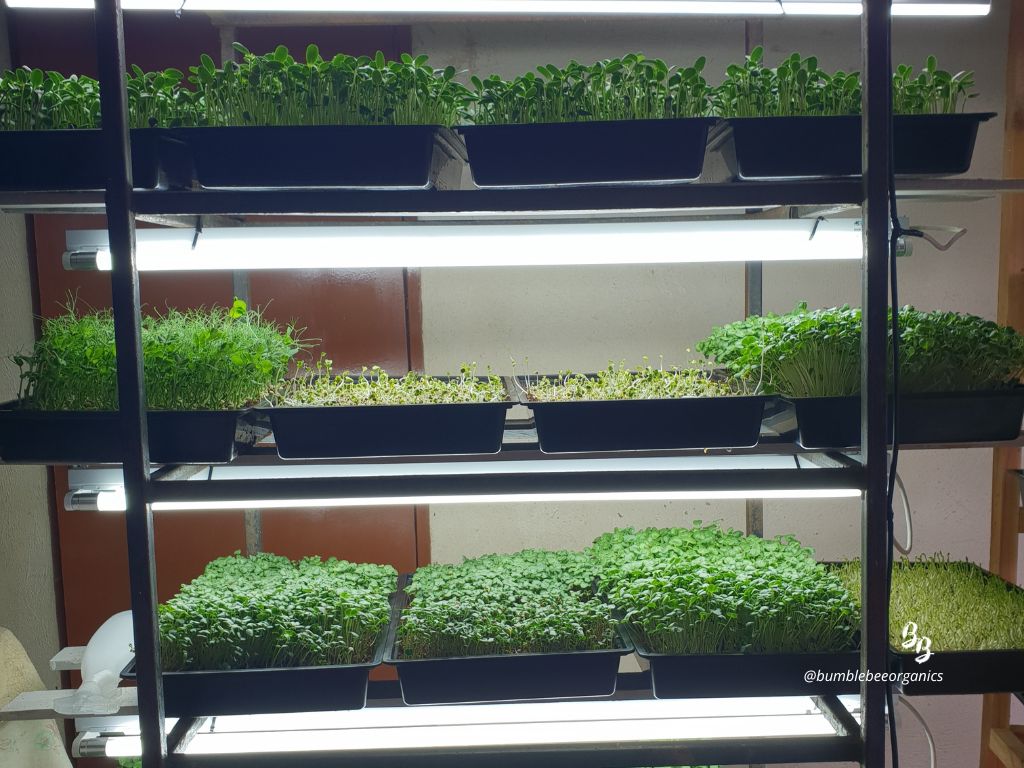
Temperature
Microgreens thrive in a warm environment. Maintaining an ambient temperature between 70-75°F (21-24°C) fosters optimal growth. If the temperature is too low, the growth may slow down, while excessively high temperatures can cause heat stress. Keep a consistent temperature to promote steady growth.
Humidity
Proper humidity levels are crucial for microgreens’ growth. High humidity can lead to mold and fungal issues, while low humidity may cause wilting and slow growth. Aim for a relative humidity level of around 40-60%. You can use a humidity tray or a misting spray to maintain adequate moisture.
Watering
Consistent and proper watering is essential for healthy growth. Overwatering can lead to root rot, while underwatering can cause stunted growth. Water the microgreens gently, avoiding waterlogged conditions. Use a spray bottle or a watering can with a fine spout to distribute water evenly.
Air Circulation
Adequate air circulation prevents stagnant air and reduces the risk of mold or disease. Ensure there is good ventilation around your microgreens by placing them in an area with some airflow. Avoid crowding the trays to allow air to circulate freely.
Growing Medium
The choice of growing medium can impact growth rates. Opt for high-quality and well-draining mediums like potting mix or coco coir. Aeration is essential to prevent waterlogging, which can hinder root development
Tips and Tricks for Optimizing Growth Rates
- Pre-soak the seeds before sowing to encourage faster germination.
- Use a heat mat to maintain an ideal temperature for germination.
- Choose fast-growing microgreen varieties for quicker harvests.
- Harvest the microgreens at the peak of their growth for the best taste and nutrient content.
- Experiment with different growing conditions to find what works best for your microgreens.
By carefully managing these factors and implementing the suggested tips and tricks, you can accelerate the growth of your microgreens and enjoy a bountiful and nutritious harvest in no time.
What are microgreens?
Microgreens are young, edible seedlings of various vegetables and herbs, harvested at an early stage of growth.
They are a new trend in the culinary world, gaining immense popularity for their exceptional taste, vibrant colors, and concentrated nutritional value.
These tiny greens are packed with essential vitamins, minerals, and antioxidants, making them a powerhouse of nutrients in a small package.
What are the easiest microgreens to grow?
Microgreens as a whole is easy to grow, as they require little space. These young plants, with their first true leaves are a great way to enjoy fresh vegetables. As a vegetable confetti, there are many varieties of microgreens that can be grown any time of the year.
With many different types of microgreens to choose from, we’ll be exploring several of the easiest microgreens to grow. They are known for their ease of cultivation, making them great choices for beginners or anyone looking to start their microgreen garden.
Here are some of the easiest microgreens to grow:
Radish
Radish microgreens are among the quickest and simplest to grow. They have a delightful peppery flavor
Sunflower
Sunflower microgreens are popular for their mild, nutty taste and attractive appearance. They are relatively easy to grow
Pea Shoots
Pea shoots are the young and tender tops of pea plants. They have a fresh and sweet flavor
Basil Microgreens
They offer a delightful sweet and aromatic flavor, reminiscent of mature basil leaves.
Beet Microgreens
Beet microgreens have a mild, earthy flavor and vibrant red stems.
Arugula Microgreens
They offer a peppery and slightly nutty flavor
These microgreens are great options for beginners due to their fast germination rates and low maintenance requirements.
They can be grown in small spaces, making them ideal for indoor gardening or as a windowsill project.
Enjoy the rewarding experience of cultivating these tasty and nutritious greens right at home!
The microgreen growth process
Growing microgreens is a straightforward and rewarding process that allows you to enjoy a fresh and nutritious harvest in a short amount of time.
Here are the key steps involved in growing microgreens fast:
1. Selecting Seeds
Begin by choosing high-quality seeds that are specifically labeled for microgreens. There is a wide variety of microgreen seeds available, ranging from vegetables like radish and broccoli to herbs like basil and cilantro. Opt for organic and untreated seeds to ensure the best results.
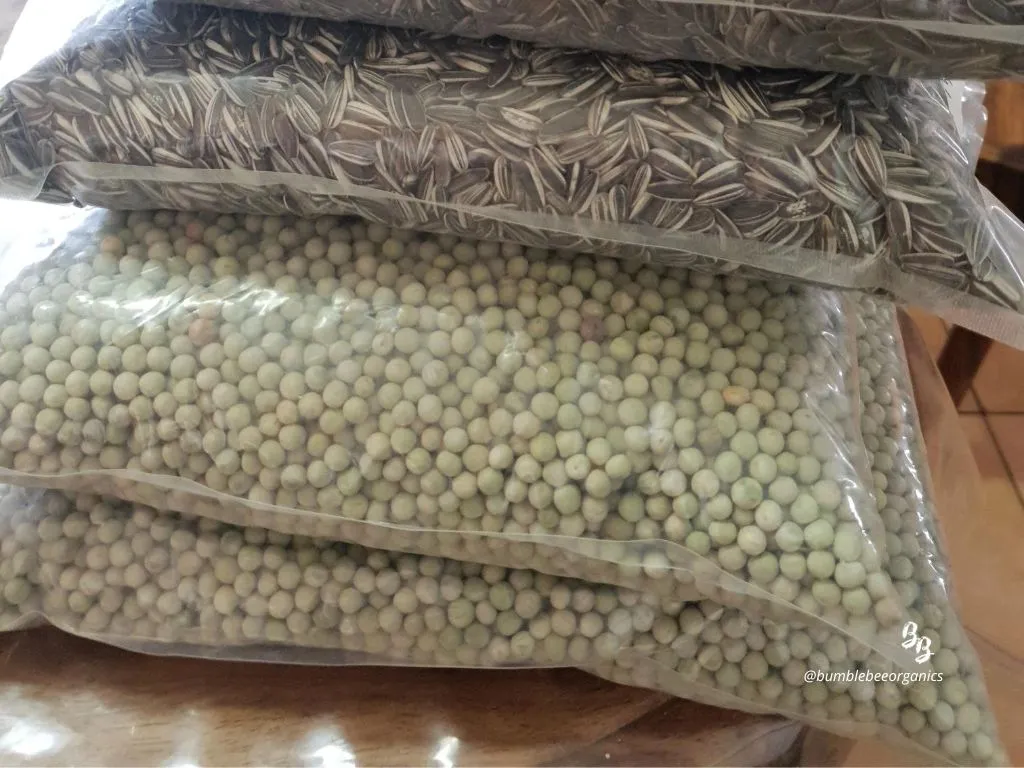
2. Preparing the Growing Medium
Select a suitable growing medium that provides good drainage and aeration. Common options include potting mix, coconut coir, or soilless growing mats. Ensure the medium is free from contaminants and disease-free.
3. Choosing Containers
Use shallow trays or containers with drainage holes to grow microgreens. You can repurpose plastic food containers or purchase microgreen-specific trays designed for optimal growth. The containers should be clean and sanitized before planting.
4. Germination Process
Sow the seeds evenly across the surface of the prepared growing medium. Gently press the seeds into the soil to promote good seed-to-soil contact. The germination process typically takes a few days, depending on the type of microgreen.
5. Factors Influencing Growth
Several critical factors influence the growth of microgreens. Light is essential for their development, but direct sunlight may be too intense. Place the trays in a location with indirect sunlight or use artificial grow lights to provide sufficient illumination.
6. Temperature and Humidity
Microgreens thrive in a warm and humid environment. Keep the temperature around 70-75°F (21-24°C) for optimal growth. Ensure proper air circulation to prevent mold or disease caused by excess humidity.
7. Watering
Maintain consistent moisture in the growing medium to facilitate germination and growth. Avoid overwatering, as it can lead to root rot. Use a gentle spray or mister to water the microgreens.
8. Growth and Harvesting
As the microgreens grow, you’ll notice the emergence of their cotyledon stage (first leaves). Once the first set of true leaves develop, the microgreens are ready for harvest. Simply use sharp scissors to cut the microgreens just above the soil level.
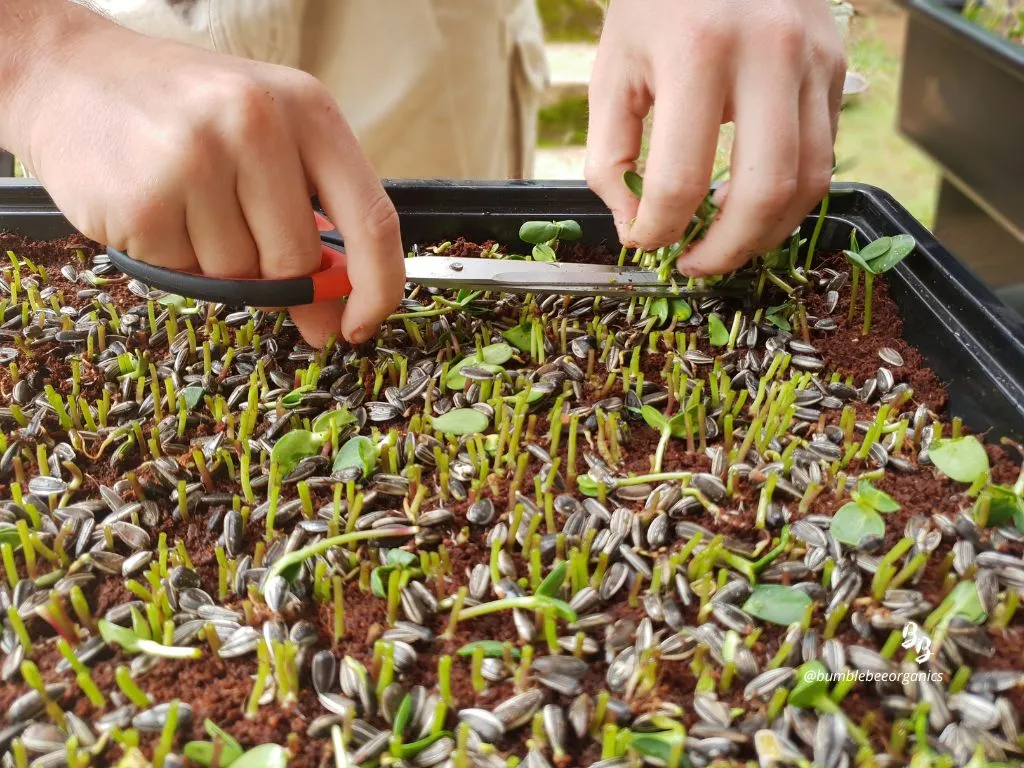
By following these steps and understanding the crucial factors influencing growth, you can enjoy a bountiful harvest of fresh and nutritious microgreens right at home. Experiment with different varieties to explore a world of diverse flavors and colors in your culinary creations.
But what does the growth timeline look like for microgreens?
The Harvesting process for fast growing microgreens
Harvesting microgreens at the right time is crucial to enjoy their peak flavor, texture, and nutritional content. The timing and technique for harvesting can vary depending on the specific microgreen variety and its growth rate.
Let’s explore the best practices for harvesting microgreens to maximize their taste and nutrition while ensuring continued growth and regrowth for multiple harvests
Harvesting Time
Microgreens are typically harvested when they reach a height of 1-3 inches (2.5 – 7.5cm), depending on the variety. This stage is known as the “cotyledon stage,” when the first seed leaves (cotyledons) have fully developed. This is usually around 7-21 days after sowing, depending on the microgreen variety.
Harvesting Technique
To harvest microgreens, use clean and sharp scissors or a small kitchen knife. Carefully cut the microgreens just above the soil level, ensuring you don’t disturb the root system. Harvesting at this stage ensures tender and flavorful greens, perfect for adding to salads, sandwiches, or garnishing various dishes.
Continued Growth and Regrowth:
After harvesting, you can encourage continued growth and regrowth for multiple harvests:
Watering
Continue to water the remaining microgreens gently to maintain soil moisture. Adequate hydration is essential for continued growth.
Sunlight
Place the trays back in their original location, providing the right amount of light without direct exposure to sunlight. Ensure proper light is available for photosynthesis to support growth.
Avoid Overharvesting
To promote regrowth, avoid overharvesting the entire tray. Instead, selectively cut a portion of the microgreens, leaving some to continue growing.
Second Harvest
Some microgreen varieties, like sunflower and pea shoots, are known for their ability to produce multiple harvests. These greens can be trimmed above the cotyledon stage, and new shoots will emerge for subsequent harvests.
Refreshing the Soil
After several harvests, consider refreshing the soil or growing medium to ensure a nutrient-rich environment for future plantings.
By carefully following these harvesting techniques and regrowth practices, you can enjoy several harvests from a single planting, maximizing the yield of your microgreens.
This sustainable approach not only provides a continuous supply of fresh and nutritious greens but also reduces waste and enhances your gardening experience.
Remember to experiment with different varieties and fine-tune your harvesting techniques to find what works best for your microgreen garden. Happy harvesting!
Nutritional benefits of rapid growth micro-greens
Microgreens are not just visually appealing; they also pack a powerful nutritional punch. Despite their small size, these young seedlings are incredibly nutrient-dense and can be a valuable addition to a healthy diet. Here are some key points highlighting the rich nutritional profile of microgreens:
1. Vitamins and Minerals
Microgreens are concentrated sources of essential vitamins and minerals. They often contain higher levels of vitamins A, C, E, and K compared to their mature counterparts. Additionally, microgreens are rich in minerals like potassium, iron, calcium, and magnesium, contributing to overall well-being.
2. Antioxidants
These tiny greens are abundant in antioxidants, compounds that help protect our cells from oxidative stress and neutralize harmful free radicals in the body. Antioxidants play a crucial role in supporting the immune system and reducing the risk of chronic diseases.
3. Nutrient Density
Microgreens are more nutrient-dense than fully grown vegetables, meaning they provide a higher concentration of essential nutrients per weight or volume. Incorporating microgreens into your diet can be an efficient way to boost your nutrient intake.
4. Potential Health Benefits
Due to their rich nutrient content, microgreens may offer various health benefits, such as supporting heart health, improving digestion, and enhancing skin health. They may also aid in weight management and contribute to better blood sugar regulation.
Culinary uses
Microgreens not only provide excellent nutrition but also elevate the flavor and aesthetics of a wide range of dishes. Here are some inspiring ideas for using microgreens in your cooking and food presentations:
1. Garnish and Topping
Sprinkle microgreens on top of soups, salads, omelets, and sandwiches to add a burst of color and flavor. Their delicate texture and vibrant appearance can instantly elevate the visual appeal of your dishes.

2. Salads and Wraps
Toss microgreens into fresh salads or include them in wraps for an extra layer of taste and texture. Their unique flavors complement various ingredients and add a refreshing element to your meals.
3. Smoothies and Juices
Blend microgreens into smoothies or juices to enhance the nutritional content without compromising on taste. Their mild flavors blend seamlessly with fruits and vegetables.
4. Pasta and Pizza
Sprinkle microgreens over pasta dishes or add them as a topping to homemade pizzas to impart a delightful touch of freshness.
5. Stir-Fries and Sautéed Dishes
Use microgreens as a finishing touch for stir-fries and sautéed vegetables. The tender greens wilt slightly, releasing their flavors into the dish
6. Popular Recipes Incorporating Microgreens
- Quinoa and Avocado Salad with Lemon-Mint Microgreens Dressing
- Smoked Salmon and Cream Cheese Bagel with Dill Microgreens
- Caprese Bruschetta with Basil Microgreens
- Chickpea and Veggie Buddha Bowl with Cilantro Microgreens
- Sunflower Microgreens Pesto Pasta
- Beet Microgreens and Goat Cheese Salad with Balsamic Glaze
By incorporating microgreens into your meals creatively, you not only enjoy their nutritional benefits but also infuse your dishes with fresh and exciting flavors. Experiment with different microgreen varieties and explore their versatility to savor a delightful culinary experience.
Let the growing begin
We’ve explored the fascinating world of microgreens and discovered their numerous benefits. These young seedlings, packed with vitamins, minerals, and antioxidants, offer a delightful and nutritious addition to any diet.
From radish and broccoli to kale and basil, the variety of microgreens available allows you to indulge in a diverse range of flavors and colors right in your home.
Now that you know the growth timeline of microgreens. From sowing the seeds to harvesting the tender greens. And you understand the critical factors affecting their growth, you can optimize their development and ensure continued growth for multiple harvests.
Microgreens have demonstrated their worth beyond being a mere culinary trend; they play a substantial role in fostering a healthy lifestyle. By incorporating these nutrient-rich greens into your daily meals, you can bolster your overall well-being and infuse your dishes with a delightful enhancement.
Now, it’s time to embark on your microgreen journey! I encourage you to explore the vibrant world of microgreens and try growing them at home. Have a spacious garden or a small kitchen windowsill, growing microgreens is a fun and rewarding experience. Witness the miracle of nature as tiny seeds transform into vibrant greens, ready for your plate.
Share your experiences and culinary creations with microgreens by sharing your story in the comments below; we’d love to hear about your journey!
If you have any questions or need guidance along the way, don’t hesitate to reach out. Gardening enthusiasts, nutrition lovers, and curious foodies alike, let’s join hands and embrace the abundance of microgreens to nourish our bodies and savor a delightful culinary adventure.
Let the microgreen revolution begin, and happy growing!

